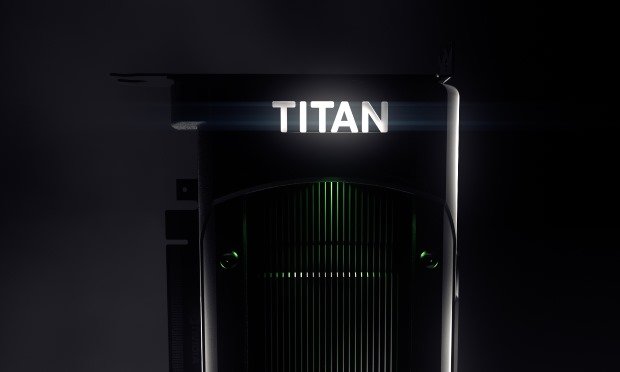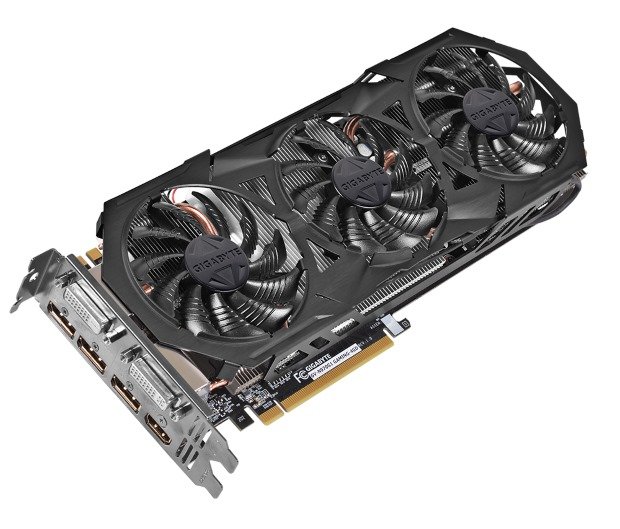Choosing the Best Nvidia Graphics Card
Choice #6: The GTX Titan X
The Titan series is basically Nvidia’s 800-pound gorilla, an exclamation point at the end of its lineup. It will get you the best gaming performance that money can buy —but you’d better have enough, because the asking price is a cool $1,000. That’s nearly twice the cost of a GTX 980, and about three times the cost of an R9 290X. But the Titan cards also have huge amounts of VRAM—a staggering 12GB in the case of the Titan X. They draw more power than other Nvidia cards, too, with a TDP of about 250 watts. That’s a measure of its draw when firing on all cylinders, without its clock speeds being manipulated above factory settings.

Despite that, the Titan X still fits inside Nvidia’s reference cooling system, with a 10.5 inch card getting air from a single turbine-like intake that pushes all its heat out the back of the case. This design is called a "full shroud.” A partial shroud uses fans to blow air onto a heatsink, but the frame holding the fans is not fully enclosed, so that heat circulates around the case. However, the fans and the heatsink can be much bigger and more effective when not restricted to Nvidia’s reference specs.
When you’re in a 250-watt range, that extra flexibility comes in handy, as we’ve seen from AMD’s R9 290 and 290X. The reference versions of these cards were hot and noisy, but you can get cards like the Sapphire Tri-X that run cool and quiet (if you have enough room for a 12-inch card, that is). We mention this because Nvidia does not allow third parties to put alternative coolers on its Titan cards. The only exception it makes is for EVGA’s "Hydro Copper” series. These have pre-installed heatsinks that are designed to hook into custom water-cooling loops. If you want cooling other than what Nvidia has approved, you have to do it yourself, which can be a little stressful, considering the expense of the card itself.
And the winner is...
It’s tough to pick a single overall winner from such a wide spread of choices, ranging literally from $100 to $1,000. Do you want the best overall performance? Then the Titan X is your guy. But maybe you’re not comfortable with spending that much money, so we go down to the GTX 980. Is it really more than $200 better than a GTX 970, though? We’re not convinced of that. If we had to pick an overall winner that balanced price, performance, and features, our choice is the GeForce GTX 970 , despite the way that its VRAM has been segmented.

In our experience, the segmentation just hasn’t produced a subjectively noticeable drop in performance, or even an objectively consistent one—even when scaling up to 4K, where VRAM demands are high. Since it’s also more than $200 cheaper than the GTX 980, you could add a second GTX 970 to your system and spend only about $150 more. Just one will be plenty at 1080p, though. And SLI can be buggy and sometimes doesn’t work at all anyway. And you need the proper amount of power and PCI Express connectors (about 750 watts, four connectors). But it’s a nice option to have.
The biggest gaming news, reviews and hardware deals
Keep up to date with the most important stories and the best deals, as picked by the PC Gamer team.
And like the GTX 980, you can get cards that have a variety of cooling options. If you’re into mini-ITX PCs and you don’t have a lot of space to work with, you can also get shrunk-down versions of the 970 from Asus, Gigabyte, and Zotac. They’re much shorter, but they don’t sacrifice any performance. That’s an option that you can’t get from the Radeon R9 290 or 290X, or even the GTX 980. Given the flexibility, performance, and price of the GTX 970, it’s hard to argue for other cards from the Green Team, unless your budget is either extremely tight or extremely loose.

